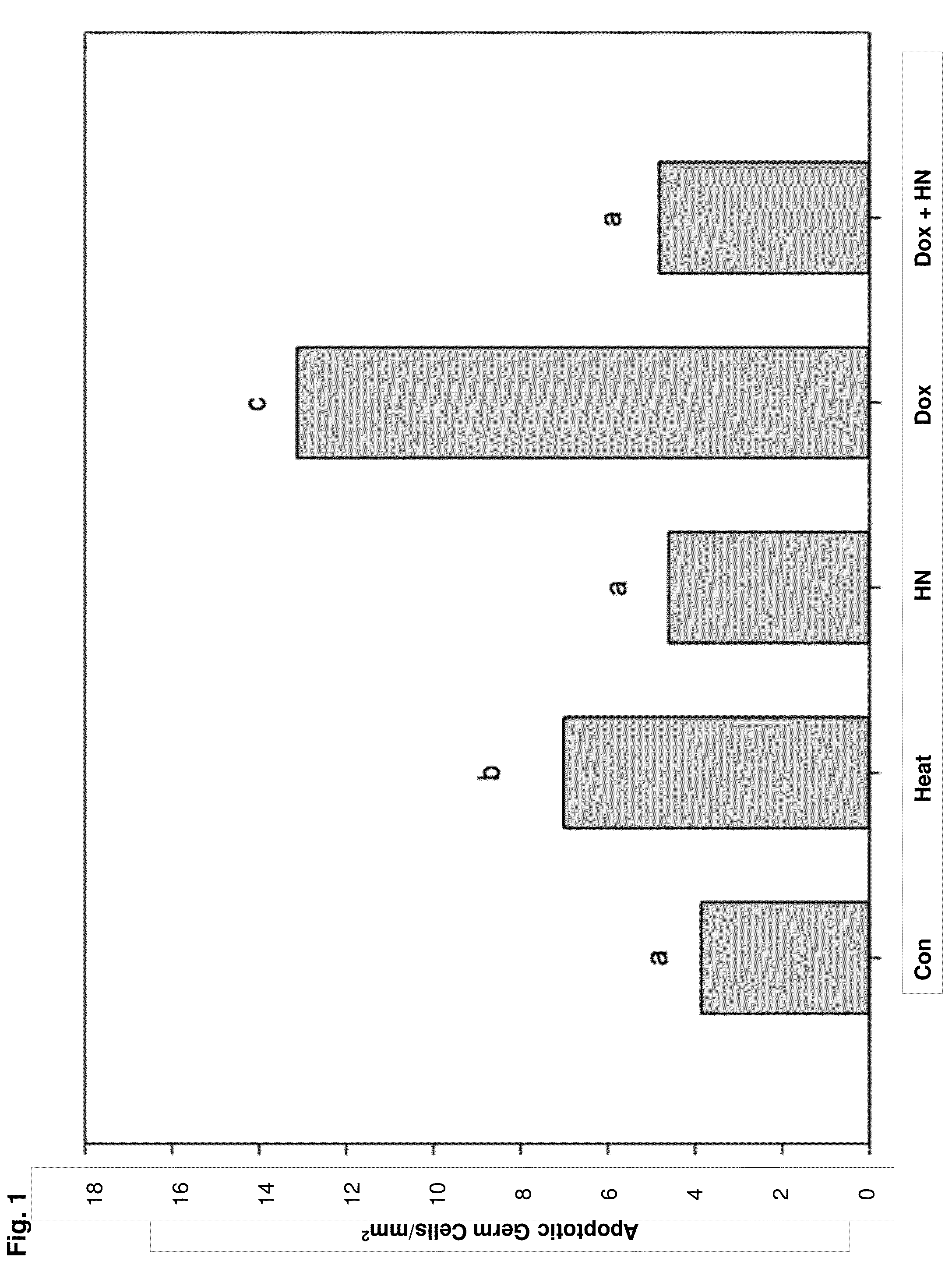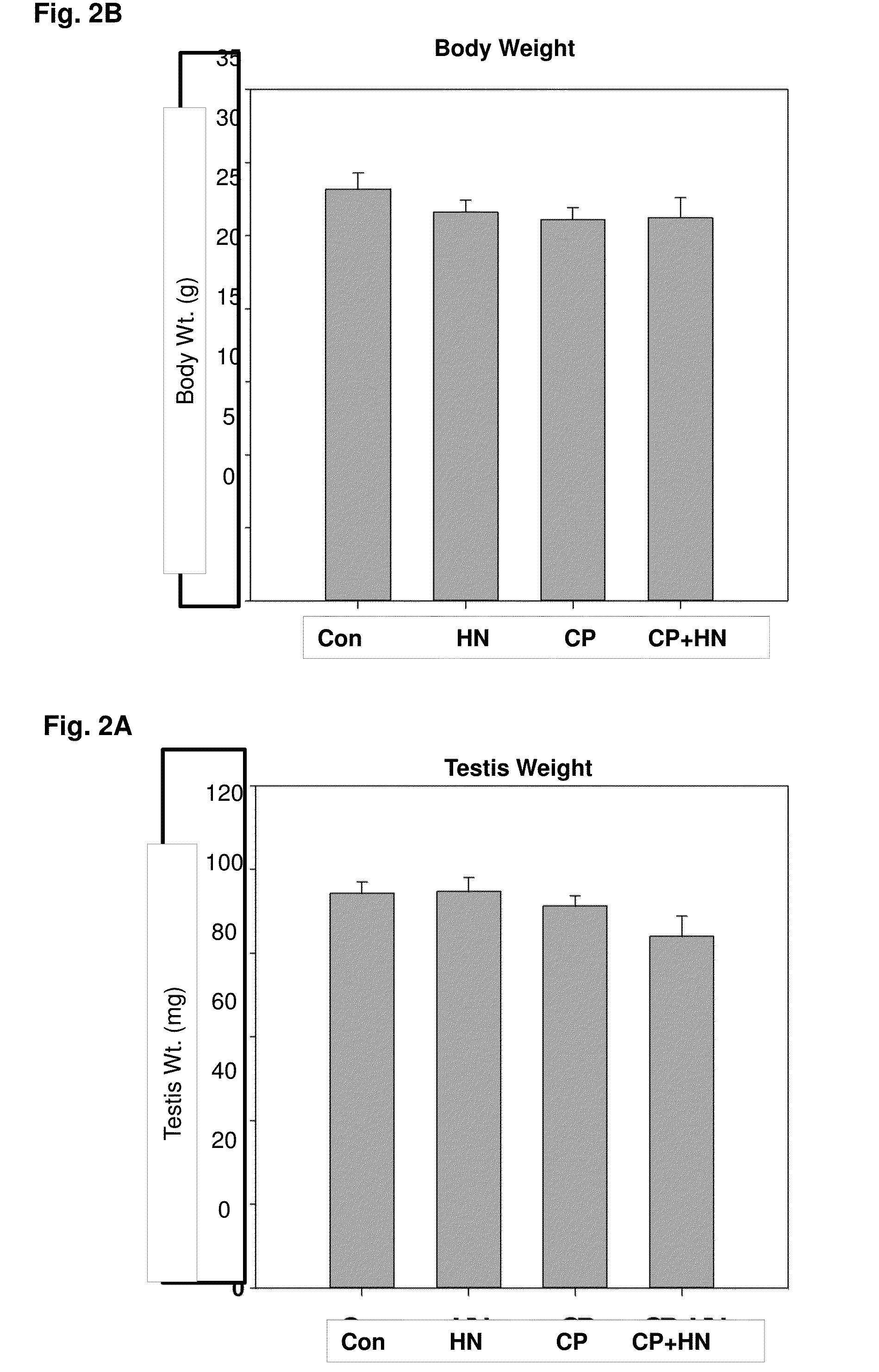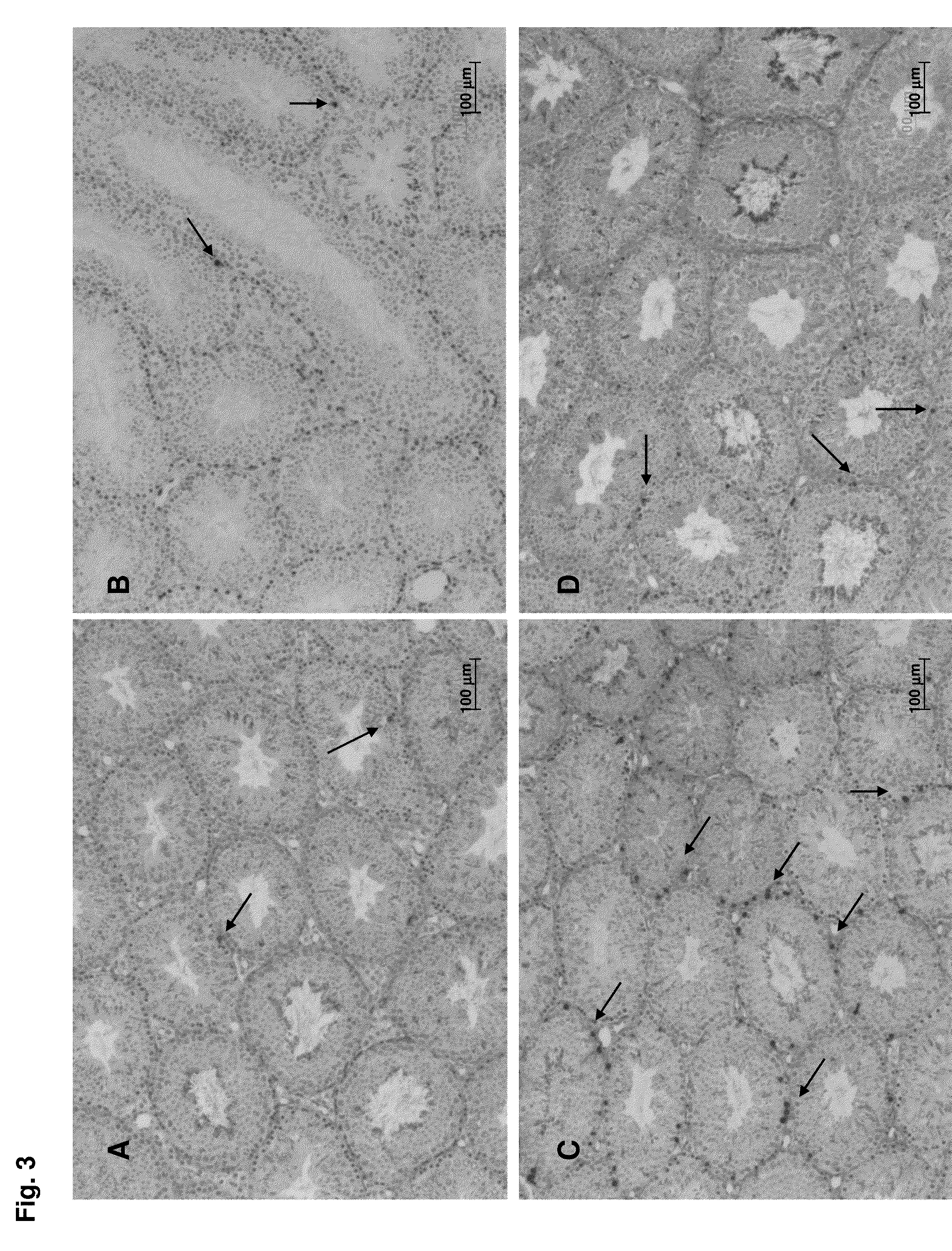Humanin, analogs and cancer treatment methods and uses thereof
a cancer treatment method and analog technology, applied in the field of humanin and analogs and cancer treatment methods, can solve the problems of spermatogenesis impairment, stem cell spermatogonia loss may not be completely reversible in cancer patients, and chemotherapy-induced sterility, so as to reduce hyperproliferative cells, inhibit or prevent progression, and increase hyperproliferative cells
- Summary
- Abstract
- Description
- Claims
- Application Information
AI Technical Summary
Benefits of technology
Problems solved by technology
Method used
Image
Examples
example 1
Experiments 1-4, HN, HN Analogs and Effects of HN and Analogs on Germ Cell Apoptosis Induced by Chemotherapeutic Drugs
[0126]Humanin (HN), a 24-amino acid mitochondrial derived peptide, is an endogenous anti-apoptotic peptide in many tissues including the testis. Experiments were performed herein to explore the application of HN and its analogs as cytoprotective agents for protecting germ cells from chemotherapy-induced apoptosis (e.g., for fertility preservation). Studies were also performed to determine the ability of HN and its analogs to alter the effects of chemotherapeutic agents against cancer cells.
[0127]As disclosed herein, it was determined that HN has cytoprotective effects on two chemotherapeutic agents in two models: doxorubicin (DOX) to induce germ cell apoptosis in ex vivo seminiferous tubule cultures (Experiment 1) and CP in vivo treatment in adult mice (Experiment 2). Accordingly, HN is an effective protector of germ cell death in mice treated with chemotherapy and ...
experiment 1
of HN on DOX-Induced Germ Cell Apoptosis in Mouse Seminiferous Tubule Cultures Ex Vivo
[0133]A total of 15 young adult (12-13 week-old) mice were used for these ex vivo studies. The animals were sacrificed with a 5% pentobarbital (200 mg / Kg) IP injection. Testes were dissected and after removing the tunica albuginea, seminiferous tubules isolated from testes were cut into small segments under a dissecting microscope and light and dark segments were separated by dissection. Ten to twelve segments were placed (2 mm in length) in each well on a six well plate with 2 ml serum free Ham F-10 culture medium (GIBCO, Life Technologies, Thermo Fisher Scientific Corp., Carlsbad, Calif.) with the following treatments: control (Con, n=10), heat (43° C., 15 minutes, used as a positive control, n=10); HN 10 μg / mL (n=9); DOX 10 mcM (Dox10, n=10); and DOX 10 mcM+Humanin 10 μg / mL (Dox10+HN, n=10). For these experiments, n represents the total number of times the treatment was repeated using different ...
experiment 2
Results: Effect of HN on CP-Induced Germ Cell Apoptosis In Vitro
[0143]In experiment 2, the body and testis weights of mice from the 4 experimental groups were not significantly different 24 hours after treatment (FIG. 2). As shown in the testicular cross sections stained with TUNEL (FIG. 3), compared to the control group (FIG. 3A), HN (40 mg / Kg, IP single injection) alone (FIG. 3B) had no significant effect on germ cell apoptosis. CP treatment (FIG. 3C) significantly increased germ cell apoptosis. HN treatment attenuated the CP-induced germ cell apoptosis (FIG. 3D). Examination of the effect of HN on stage-specific germ cell apoptosis showed that in early-late stages of spermatogenesis (Stages XI-IV) (FIG. 4), CP treatment significantly increased germ cell apoptosis compared to control (p=0.003) and HN (p−0.003) (FIG. 4). The CP-induced apoptosis was ameliorated by concomitant treatment with HN (CP+HN, p<0.033) but not to the extent of apoptosis observed in control (p=0.052) and HN ...
PUM
| Property | Measurement | Unit |
|---|---|---|
| weight | aaaaa | aaaaa |
| weight | aaaaa | aaaaa |
| body weight | aaaaa | aaaaa |
Abstract
Description
Claims
Application Information
 Login to View More
Login to View More - R&D
- Intellectual Property
- Life Sciences
- Materials
- Tech Scout
- Unparalleled Data Quality
- Higher Quality Content
- 60% Fewer Hallucinations
Browse by: Latest US Patents, China's latest patents, Technical Efficacy Thesaurus, Application Domain, Technology Topic, Popular Technical Reports.
© 2025 PatSnap. All rights reserved.Legal|Privacy policy|Modern Slavery Act Transparency Statement|Sitemap|About US| Contact US: help@patsnap.com



